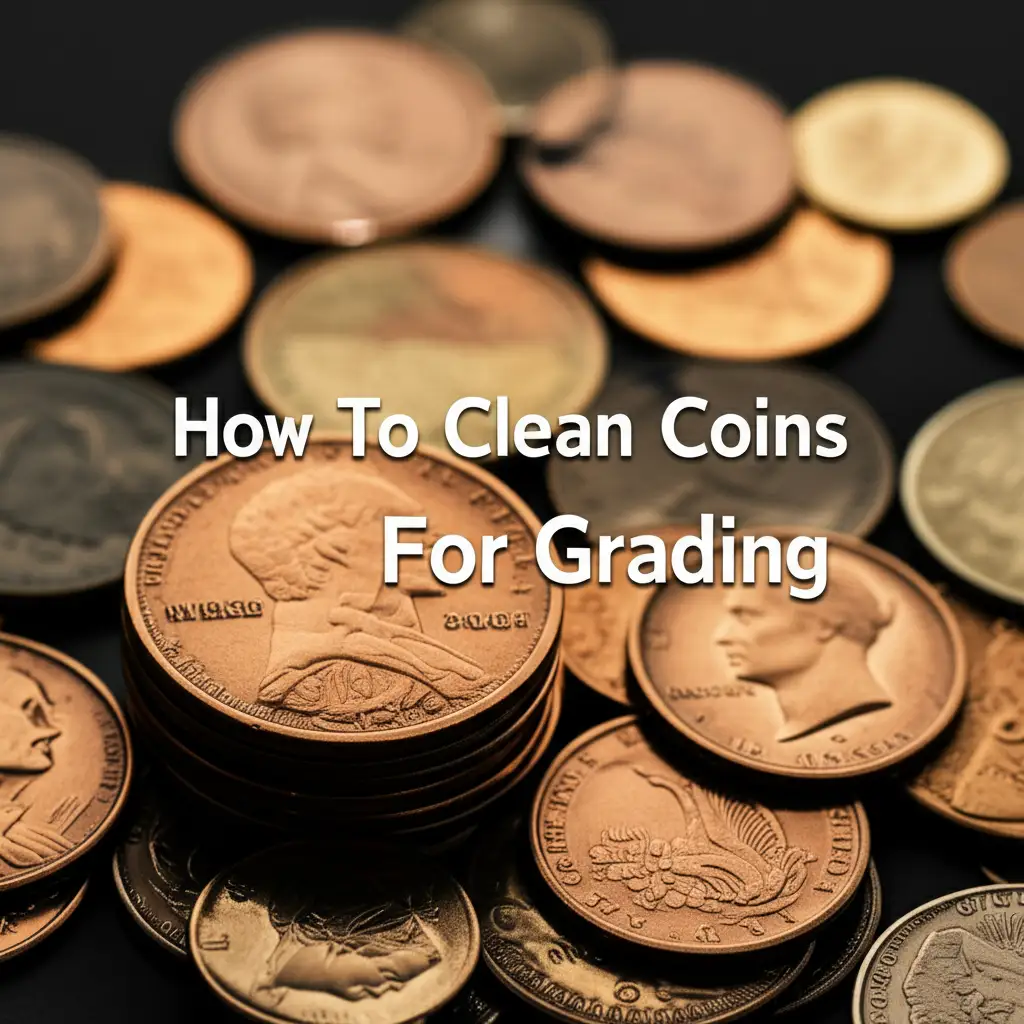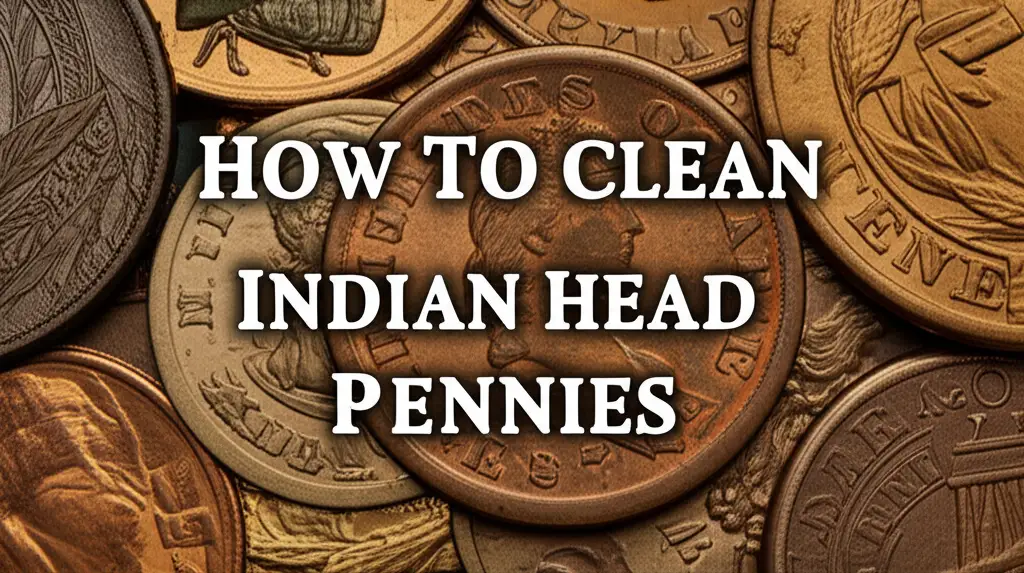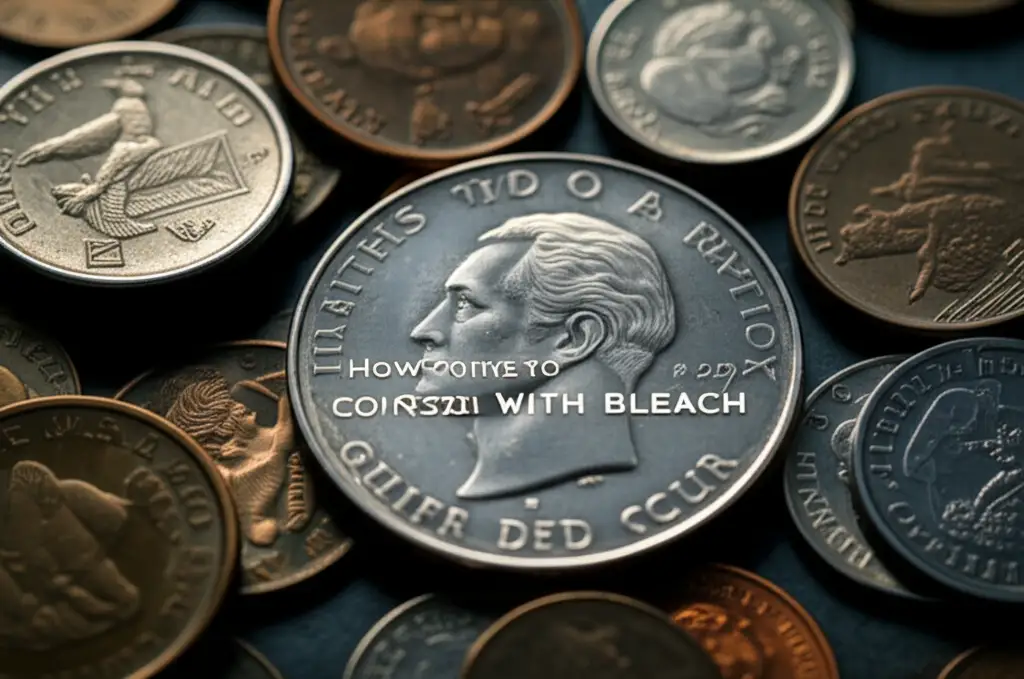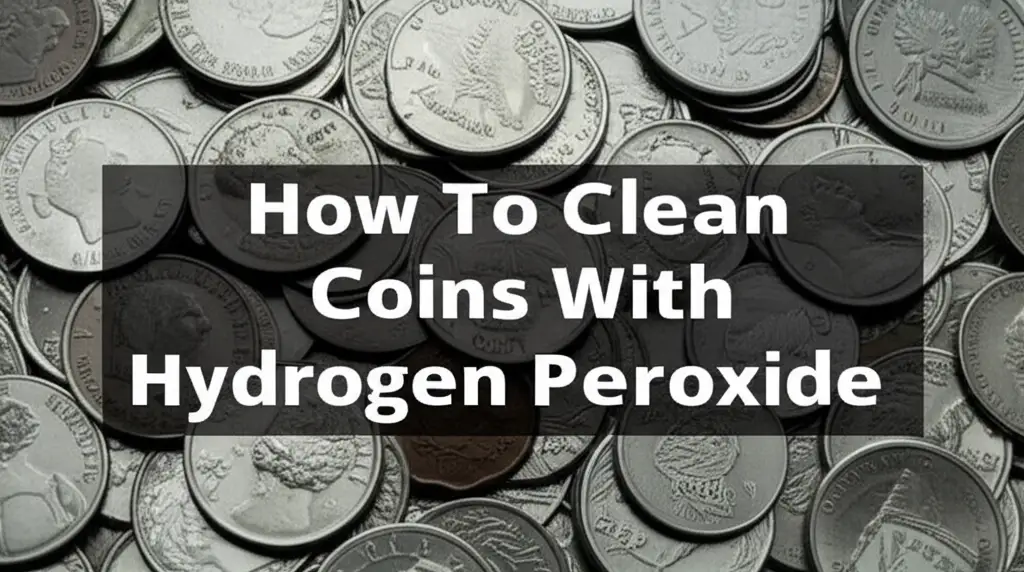· Numismatics · 14 min read
How To Clean Coins For Grading

Unlock the True Value: How to Clean Coins for Grading
Are you holding a coin you believe is valuable? Many coin collectors wonder about the best ways to clean coins for grading. You might think cleaning will make your coin look better. However, most experts agree cleaning often damages a coin’s surface. This damage lowers its grade and value significantly. It is important to understand the risks before you do anything. This guide explains why “cleaning” is risky and what safe steps you can take instead. I will share important information about preserving your coin’s original surface. You will learn the best practices for preparing coins for professional grading.
Takeaway
- Avoid cleaning coins for grading. Cleaning almost always lowers a coin’s value.
- Focus on conservation. This means removing harmful substances only.
- Preserve original surfaces. Grading services value untouched coins.
- Seek professional help. Expert conservation is the safest option for valuable coins.
Cleaning coins for grading is generally not recommended. Most grading services prefer coins in their original, untouched condition. Any cleaning, even gentle methods, can leave hairline scratches or alter the coin’s natural patina. This damage causes a lower grade and reduces the coin’s market value. Instead, focus on proper handling and storage to preserve the coin as it is.
The Golden Rule: Why Cleaning Coins for Grading is Risky
Many new collectors believe a shiny coin gets a higher grade. This idea is incorrect. Professional coin graders look for original surfaces. These surfaces show how the coin looked when it left the mint. Cleaning removes this original layer. It causes microscopic scratches and changes the coin’s appearance.
Grading services can easily detect cleaned coins. They use powerful microscopes to examine coin surfaces. Any sign of cleaning, even light rubbing, results in a lower grade. This lower grade means your coin loses much of its potential value. A coin with its natural patina, even if dirty, often grades higher than a cleaned coin.
Coins develop a unique surface called patina over time. Patina is a natural oxidation layer. It protects the coin and adds to its character. Removing patina through cleaning damages this protective layer. It also erases part of the coin’s history. Collectors value coins with undisturbed original surfaces.
I understand the desire to make your coin look better. However, cleaning can turn a valuable coin into a common one. You must resist the urge to clean. It is a permanent change that cannot be undone. Always prioritize preserving the coin’s original state.
Understanding the Difference: Cleaning vs. Conservation
Many people use the terms “cleaning” and “conservation” interchangeably. They are very different actions. Understanding this difference is critical for coin collectors. Improper “cleaning” destroys coin value. Proper “conservation” protects it.
Cleaning a coin means trying to make it look shinier or brighter. This often involves rubbing, scrubbing, or using abrasive chemicals. These methods remove material from the coin’s surface. They can strip away the natural patina. They leave behind tell-tale signs like hairlines or an unnatural luster. This type of action always harms a coin’s grade and value. Do not use household cleaners or polishes on your coins.
Conservation, on the other hand, means stabilizing a coin. It involves removing harmful substances. These substances might include PVC residue, active corrosion, or oils. These materials actively damage the coin over time. Conservation aims to stop further degradation. It does not try to change the coin’s appearance. It preserves the coin’s original surface.
Professional conservators use specialized techniques. They work to remove only harmful contaminants. They do not polish or alter the coin’s natural state. This careful process requires expertise and special tools. For example, a professional might use a specific solvent to dissolve PVC residue. They will do this without touching the coin’s metal. This protects the coin’s integrity. Remember, you should only consider conservation if a substance is actively harming your coin.
What Grading Services Look For (and Punish)
Coin grading companies like PCGS and NGC set strict standards. They examine every part of a coin. Their goal is to assign an accurate, unbiased grade. They prioritize original surfaces. This means they want to see the coin exactly as it left the mint, or how it naturally aged.
Grading services use powerful microscopes and lighting. They look for specific signs of damage or alteration. One major sign they look for is cleaning. Cleaning leaves distinct marks. These marks include tiny scratches or an altered luster. These are often called “hairlines” or “brush marks.” A cleaned coin will almost always receive a “details” grade. This means it has problems. It also drastically reduces its market value.
They also look for evidence of environmental damage. This includes corrosion, spots, or toning. Natural toning is often desirable. It adds character to the coin. Artificial toning, however, is not. Artificial toning results from improper cleaning or storage. Grading services can tell the difference. They will penalize coins with artificial toning.
- Original Luster: Graders check if the coin’s original shine is present. Cleaning removes this.
- Surface Integrity: They look for scratches, nicks, or chemical burns. Cleaning causes many of these.
- Patina: Natural patina is valued. Removed or altered patina is a red flag.
- Environmental Damage: Active corrosion needs stabilization. Graders understand this.
They are experts at identifying subtle signs of tampering. Their job is to ensure fairness and accuracy in the coin market. Your best approach is to present your coin in its unaltered state. Do not attempt to fix perceived flaws yourself. This ensures the best possible outcome from the grading process.
When (and How) to Consider Minimal Intervention
There are very few situations where any intervention on a coin for grading is advisable. Even then, “minimal intervention” means professional conservation, not home cleaning. I must emphasize this point. DIY cleaning for grading is almost always a mistake. Only consider intervention if a substance is actively corroding your coin. This could be green PVC residue or active rust.
For example, coins stored in old soft plastic flips can develop sticky green residue. This is PVC (polyvinyl chloride) damage. PVC leaches chemicals that actively eat away at the coin’s surface. In this specific case, professional removal of the PVC is necessary. It stops further destruction of the coin. A professional conservator uses special solvents. They dissolve the PVC without harming the coin’s metal. They do not scrub or rub the coin. This is a very precise process.
Another example is active bronze disease on copper coins. This manifests as powdery green spots. It is a highly destructive form of corrosion. If left untreated, it will destroy the coin. A professional must neutralize and remove it. This prevents it from spreading. These interventions are about stopping active destruction. They are not about improving appearance.
- Identify Active Harm: Is the substance actively degrading the coin?
- Assess Value: Is the coin valuable enough to justify professional conservation costs?
- Seek Expert Help: Always consult a professional numismatic conservator. Do not attempt this yourself. They have the knowledge and tools. They can perform this delicate work safely.
Remember, even professional conservation might leave slight evidence. Grading services will note it. However, they prefer a professionally conserved coin over a coin that continues to deteriorate. Your goal is to preserve the coin’s existing condition, not to “clean” it. For general cleaning topics, such as how to clean coins with hydrogen peroxide, specific precautions are needed for different metals and situations. For most collectible coins, hydrogen peroxide is too aggressive.
Common “Cleaning” Mistakes to Avoid
Many common household cleaning methods can permanently damage your valuable coins. You must avoid these practices entirely. People often think these methods will restore a coin’s beauty. In reality, they destroy its original surface and appeal to graders. I have seen countless coins ruined this way.
One major mistake is using abrasive materials. This includes polishing cloths, paper towels, or brushes. These items leave microscopic scratches on the coin’s surface. Graders call these “hairlines.” Even a soft cloth can cause damage if you rub too hard. These scratches reflect light differently. They make the coin look dull or unnaturally shiny. This instantly flags the coin as cleaned.
Another error is using harsh chemicals. Many household cleaners contain strong acids or alkalis. These chemicals can strip away patina, etch the metal, or leave residues. Products like vinegar, baking soda, or even toothpaste are highly damaging to coins. For example, while you might use how to clean mold with vinegar for other household tasks, it is disastrous for coins. Similarly, a mixture like how to clean with vinegar and baking soda creates an abrasive chemical reaction that harms coin surfaces. Such common cleaners are too aggressive for delicate coin metals.
- Do NOT use:
- Abrasives: Polishing cloths, toothbrushes, paper towels, steel wool.
- Household Cleaners: Dish soap, window cleaner, bleach, silver polish.
- Acids/Bases: Vinegar, lemon juice, baking soda paste, ammonia.
- Chemical Dips (DIY): Commercial coin dips designed to remove toning are often too harsh.
- Ultrasonic Cleaners: These can cause microscopic vibrations that damage delicate surfaces.
- Rubbing or Wiping: Even with soft materials, this causes hairlines.
Always remember that once a coin’s surface is altered, it cannot be truly restored. The damage is permanent. Your best course of action is always to do nothing. Avoid any temptation to “improve” the coin’s appearance.
Preparing Your Coin for Submission (Without Cleaning)
Proper preparation for grading involves careful handling and presentation. It does not involve cleaning. Your main goal is to protect the coin from any further damage. This ensures it reaches the grading service in the same condition it leaves your hands. I always advise collectors to focus on these steps.
First, handle your coin carefully. Always hold coins by their edges. Use clean, soft cotton gloves. Oils from your skin can transfer to the coin’s surface. These oils can cause permanent spots or discoloration over time. Gloves prevent this transfer. They also provide a better grip.
Next, choose the right holder. Use archival-safe coin holders. These are typically non-PVC flips or slabs made from inert plastics. Avoid old, soft PVC flips. As mentioned, PVC can leach chemicals. These chemicals cause sticky green residue. This residue actively harms coins. Place the coin securely in a holder. This prevents it from moving around. Movement can cause scratches.
- Gentle Handling: Use gloves. Hold only by the rim.
- Safe Storage: Place in non-PVC flips or hard plastic slabs.
- No Wiping: Do not wipe dust off with a cloth. Use a puff of air if necessary.
- Professional Photography (Optional): Good photos can help document pre-submission condition.
Some collectors wonder about how to clean old coins found in the ground. Cleaning found coins is a different activity. It often involves removing dirt for identification. This is not the same as preparing a coin for grading. For grading, the “found in the ground” condition, complete with dirt, is often preferable to a cleaned surface. A professional grader can tell if a coin has natural encrustations versus cleaning damage. Submit the coin as-is.
Lastly, pack your coin securely for shipping. Use sturdy boxes and plenty of padding. This protects the coin during transit. Ensure your package is insured. You want peace of mind that your valuable coin will arrive safely. These simple steps increase your coin’s chance of receiving a good grade.
Seeking Professional Numismatic Conservation
For rare or highly valuable coins, professional numismatic conservation is the only safe option. This is not “cleaning” in the common sense. It is a specialized process performed by experts. They aim to stabilize and preserve a coin without altering its original surface. I recommend this route if you have concerns about active damage.
Professional conservators have deep knowledge of coin metals and chemistry. They understand how different substances react. They use precise, controlled methods. These methods include specific chemical baths, careful rinsing, and precise drying. They often work under magnification. This allows them to target harmful elements without affecting the coin itself.
Their primary goal is to remove harmful contaminants. These include PVC damage, active corrosion, or harmful residues. They do not aim to make the coin “shinier.” They want to stop further degradation. After conservation, the coin may still show its age. It will retain its natural patina and original surfaces. This is what grading services prefer.
- When to Consider:
- Coin has active PVC damage.
- Coin shows active bronze disease or other corrosion.
- Coin is very valuable and needs stabilization.
- Finding a Professional:
- Research reputable conservation services.
- Check their credentials and experience.
- Ask for examples of their work.
- Understand their process and fees.
Professional conservation can be costly. This is why you must consider the coin’s value first. For lower-value coins, the cost of conservation might exceed the coin’s worth. For higher-value items, it is an investment in preservation. It helps maintain the coin’s long-term integrity and value. Always consult with a professional before any intervention. They can advise if conservation is appropriate for your specific coin.
FAQ Section
Q1: Can I use distilled water to clean my coins for grading? A1: Using distilled water is often considered the safest minimal intervention. It can rinse away loose dirt or debris without chemicals. However, you must avoid rubbing the coin. Pat the coin dry gently or let it air dry. Even with distilled water, there is a small risk of leaving water spots. Most experts still advise against it for coins intended for grading unless absolutely necessary.
Q2: Will wiping my coin with a soft cloth affect its grade? A2: Yes, wiping your coin, even with a soft cloth, will almost certainly affect its grade. A soft cloth can leave microscopic scratches called hairlines. These marks are permanent. Professional graders will easily spot them under magnification. This damage will lead to a lower grade, often a “cleaned” designation, and a significant drop in value.
Q3: What does “details grade” mean for a cleaned coin? A3: A “details grade” means the coin’s originality has been compromised. The coin receives a numerical grade for wear, like XF-40. However, the grading service adds a notation like “cleaned,” “damaged,” or “holed.” For example, a coin might be graded “XF-40 Cleaned.” This dramatically reduces its market value compared to an XF-40 coin without problems.
Q4: Should I clean coins I find in the ground before grading them? A4: No, you should generally not clean coins found in the ground before grading. The dirt and encrustation are part of the coin’s original state. Cleaning them yourself can cause irreversible damage. Professional graders can distinguish between natural encrustations and cleaning damage. Submit the coin as you found it, in its original condition.
Q5: How can I safely store my coins to prevent damage before grading? A5: To safely store coins, use inert, archival-safe holders. Non-PVC flips or rigid plastic slabs are ideal. Avoid soft PVC flips, which can leach harmful chemicals. Store coins in a stable environment. Keep them away from extreme temperature changes, humidity, and direct sunlight. Proper storage prevents damage before you submit them for grading.
Q6: What is “patina” and why is it important for coin grading? A6: Patina is a natural layer of oxidation that forms on a coin’s surface over time. It protects the coin’s metal and gives it a unique character. Graders value original patina highly. It shows the coin has remained untouched since its minting. Removing or altering this patina through cleaning is seen as damage and lowers the coin’s grade and value.
Conclusion
Understanding how to prepare coins for grading means knowing when not to act. The simple truth is: you should almost never clean coins for grading. Any attempt to make a coin look “better” by cleaning usually results in permanent damage. This damage lowers its professional grade and significantly reduces its market value. Instead, focus on preservation. Protect your coins from any further harm.
Remember the critical difference between aggressive cleaning and professional conservation. Only expert conservation can remove harmful substances that actively degrade your coin. This is a specialized process. It requires deep knowledge and precision. For most coins, your best strategy is careful handling, proper storage, and doing absolutely nothing to its surface. Your coins will retain their original beauty and value this way. Preserve your numismatic treasures. They will thank you in their final grade.
- coin grading
- coin conservation
- coin cleaning
- numismatic care
- coin preservation




